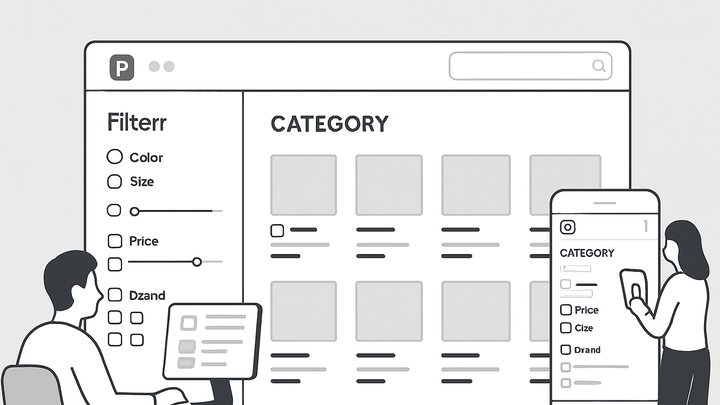Published on 2025-06-29T22:07:03Z
What Are eCommerce Category Filters and Why They Matter
eCommerce Category Filters are interactive tools on online store category pages that allow shoppers to
narrow down product listings by attributes such as size, color, price, brand, and more. These filters
improve product discoverability, reduce search friction, and guide users toward purchase decisions.
Implementing well-designed filters can boost engagement, conversions, and average order value by helping
customers find what they need quickly. However, poorly executed filtering can lead to confusion, slow page
performance, and SEO challenges due to duplicate or thin content issues. Tools like Prevue.me
offer actionable critiques on filter usability, performance, SEO configuration, and accessibility to
optimize your filter setup for maximum lead generation and conversion rate optimization (CRO).
Ecommerce category filters
Dynamic tools on category pages that let users refine product listings by attributes, enhancing discoverability and conversions.
Overview of eCommerce Category Filters
This section introduces the concept, use cases, and fundamental role of category filters in online retail environments.
-
Definition and purpose
Category filters empower shoppers to refine large product catalogs by selecting specific attributes, reducing result sets to items that match their criteria.
-
Common filter types
Filters can appear as checkboxes, radio buttons, dropdowns, sliders, and more, each suited to different attribute ranges or categorical values.
- Checkbox filters:
Allow multiple selections for attributes like color or brand.
- Slider filters:
Offer range-based filtering for numeric values such as price or weight.
- Dropdown filters:
Compact selection lists useful for long attribute lists like country or material.
- Checkbox filters:
Impact on Conversion Rate Optimization (CRO) and UX
Well-designed filters can streamline the shopping journey, directly influencing conversion rates and overall user satisfaction.
-
Enhanced discoverability
Quick filtering reduces time to find relevant products, keeping users engaged and lowering bounce rates.
-
Reduced cognitive load
Clear labeling and intuitive filter placement prevent user frustration and decision paralysis.
SEO Considerations for Filtered Pages
Improper management of filter URLs can lead to duplicate content, thin pages, and crawl inefficiencies. Strategic SEO tactics are essential.
-
Canonicalization
Use canonical tags to point search engines to the primary category URL and avoid duplicate indexation of filtered views.
-
Parameter handling
Configure robots.txt and Google Search Console parameter settings to guide crawler behavior and prevent unnecessary URL bloat.
Best Practices and Common Pitfalls
Design filters for performance, clarity, and accessibility while avoiding mistakes that can harm UX, SEO, or site speed.
-
Performance optimization
Implement server-side filtering or efficient client-side rendering to maintain fast load times.
-
Accessibility compliance
Ensure filters are keyboard-navigable, provide ARIA labels, and maintain contrast ratios for all filter controls.
Leveraging Prevue.me for Actionable Critiques
prevue.me analyzes your filter implementation across CRO, lead generation, SEO, UX, and accessibility, delivering prioritized recommendations.
-
Cro and lead generation insights
Get targeted suggestions to optimize filter placement, labeling, and default settings that drive sign-ups and purchases.
-
Technical seo audit
Receive guidance on URL parameter configuration, canonical tags, and sitemaps to improve crawl efficiency.
-
Ux and accessibility recommendations
Actionable feedback on filter usability, mobile responsiveness, and compliance with accessibility standards like WCAG.
